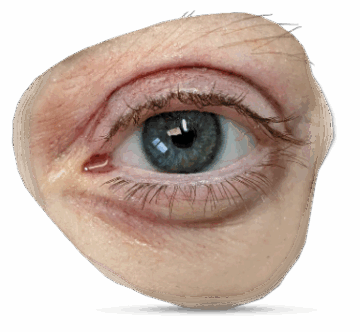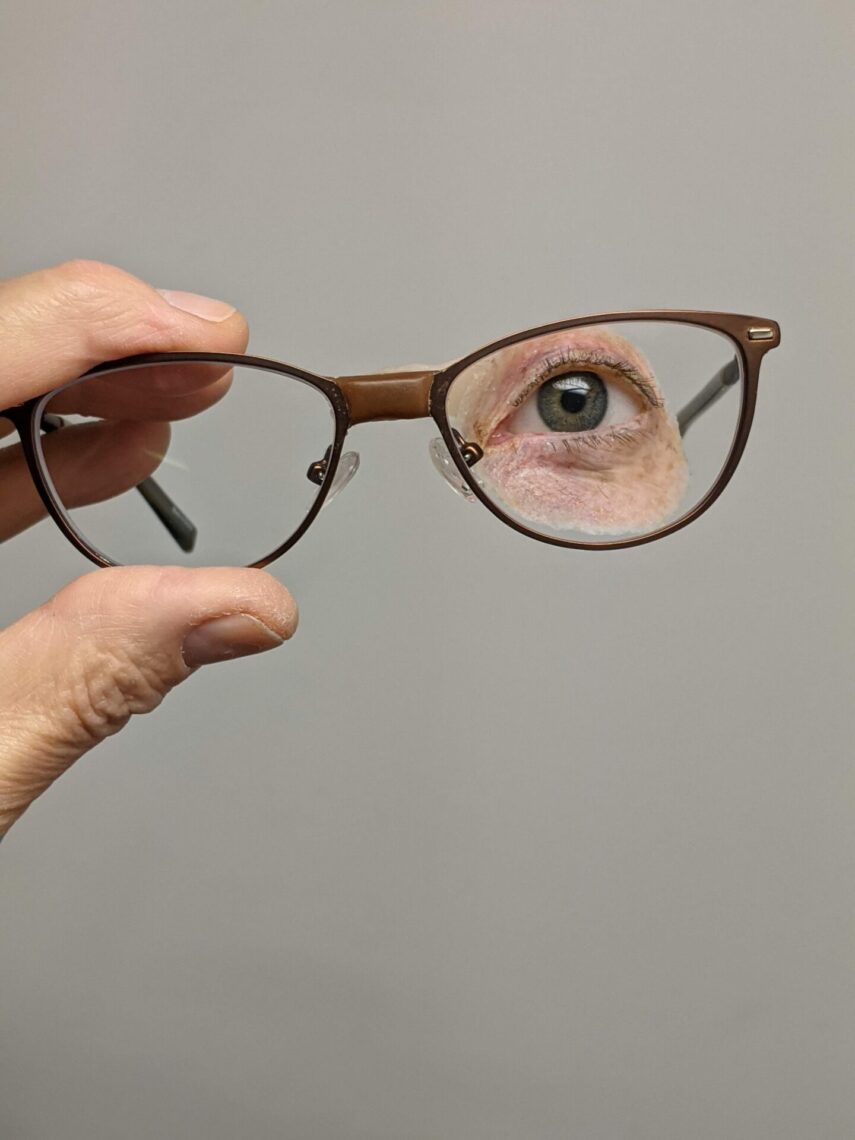Visualize the Difference in Orbital Prosthesis Technology
Orbital prostheses are developed painstakingly by your Medical Art Prosthetics anaplastologist and partnering ocularists.
Eye and orbital prosthetics are crafted using:
- high purity ophthalmic polymer plastics
- medical grade silicone elastomers
- human or synthetic hair elements
- high quality dyes and other colorants
Your orbital prosthesis becomes an lifelike creation uniquely for you. We will listen to your concerns and provide guidance so your experience is positive and successful.
Our team includes anaplastologists who have advanced experience in digital technologies. We also use a powerful Artec hand held scanner and 3D printing when needed. However, eye and orbital prosthetics always demands the temperament and skills of an artist. Be assured your beautiful orbital prosthesis or oculofacial restoration will result from the newest materials, technologies, and loving artistry.
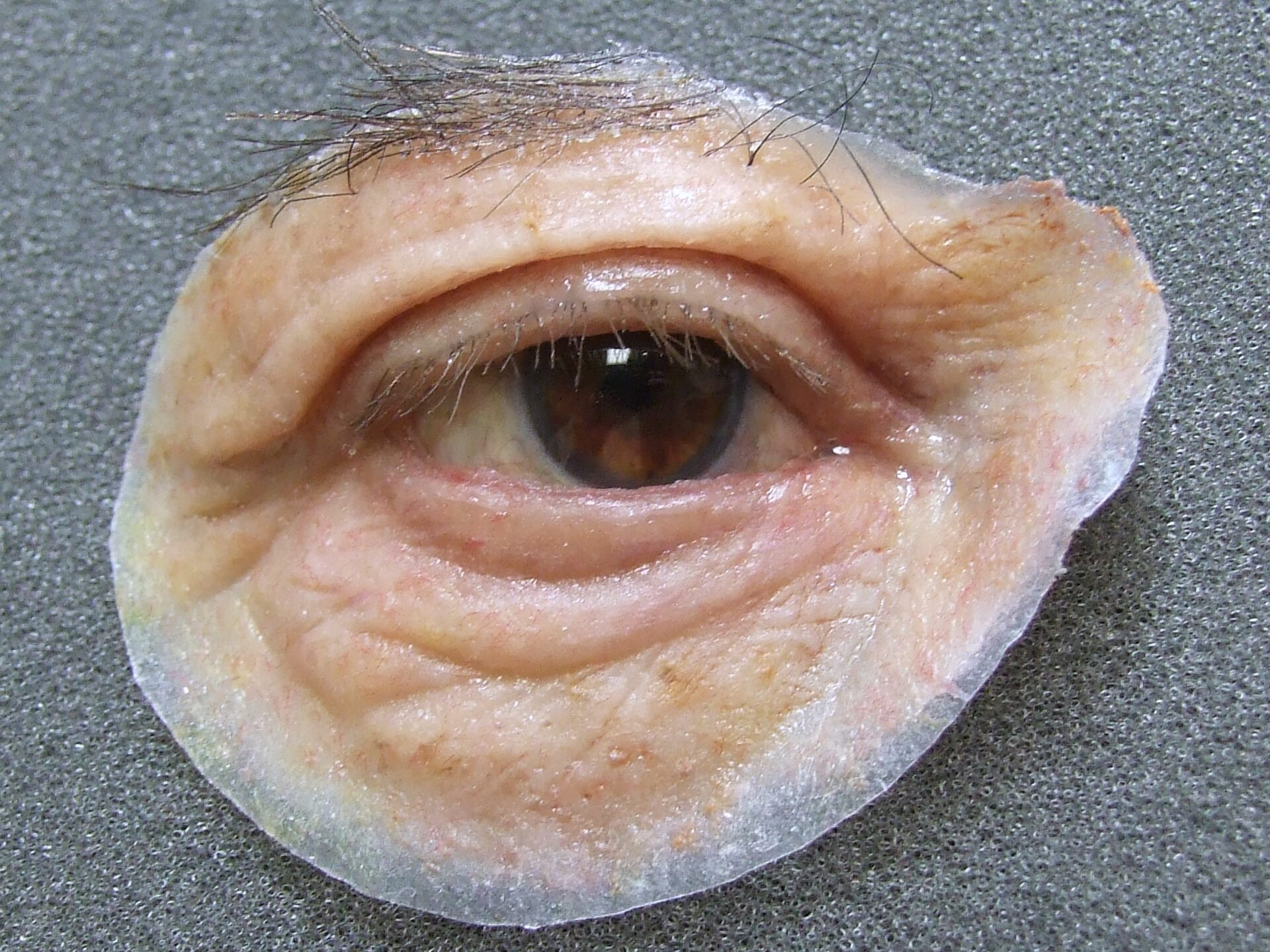
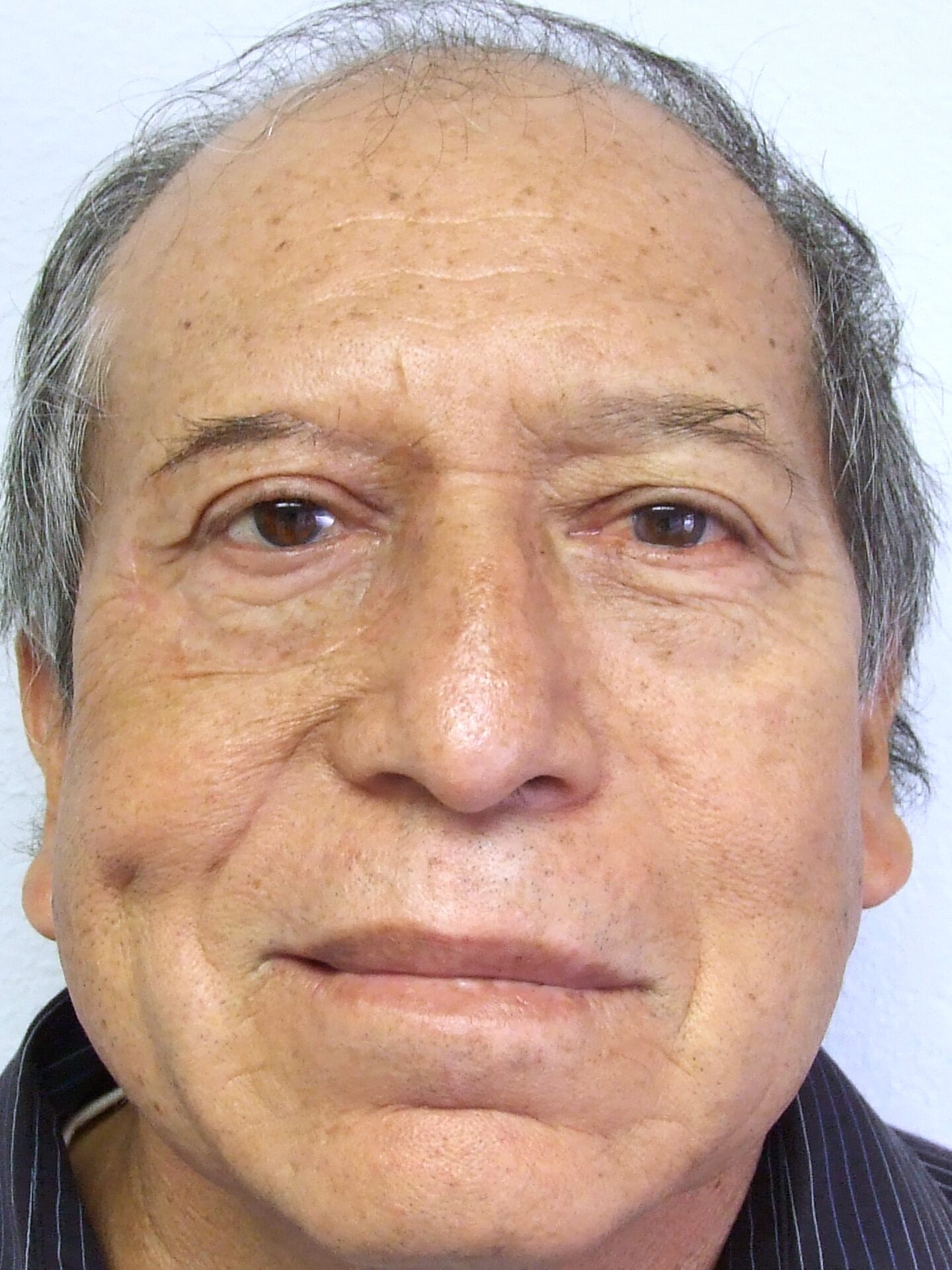
Adhesive-Retained Orbital Prosthesis
Adhesive-Retained Orbital Prosthesis
Application of prosthetic adhesives remains the conventional method and a very reliable and secure means of attaching orbital prostheses. We employ the best adhesives and placement strategies based on 35 years of experience specifically in this specialty. The nuanced methods, tricks and techniques we have developed working closely with hundreds of orbital patients are all brought to bare making adhesive daily use ever-easier for each new patient. Mastery of adhesive management is empowering and we see it all the time.
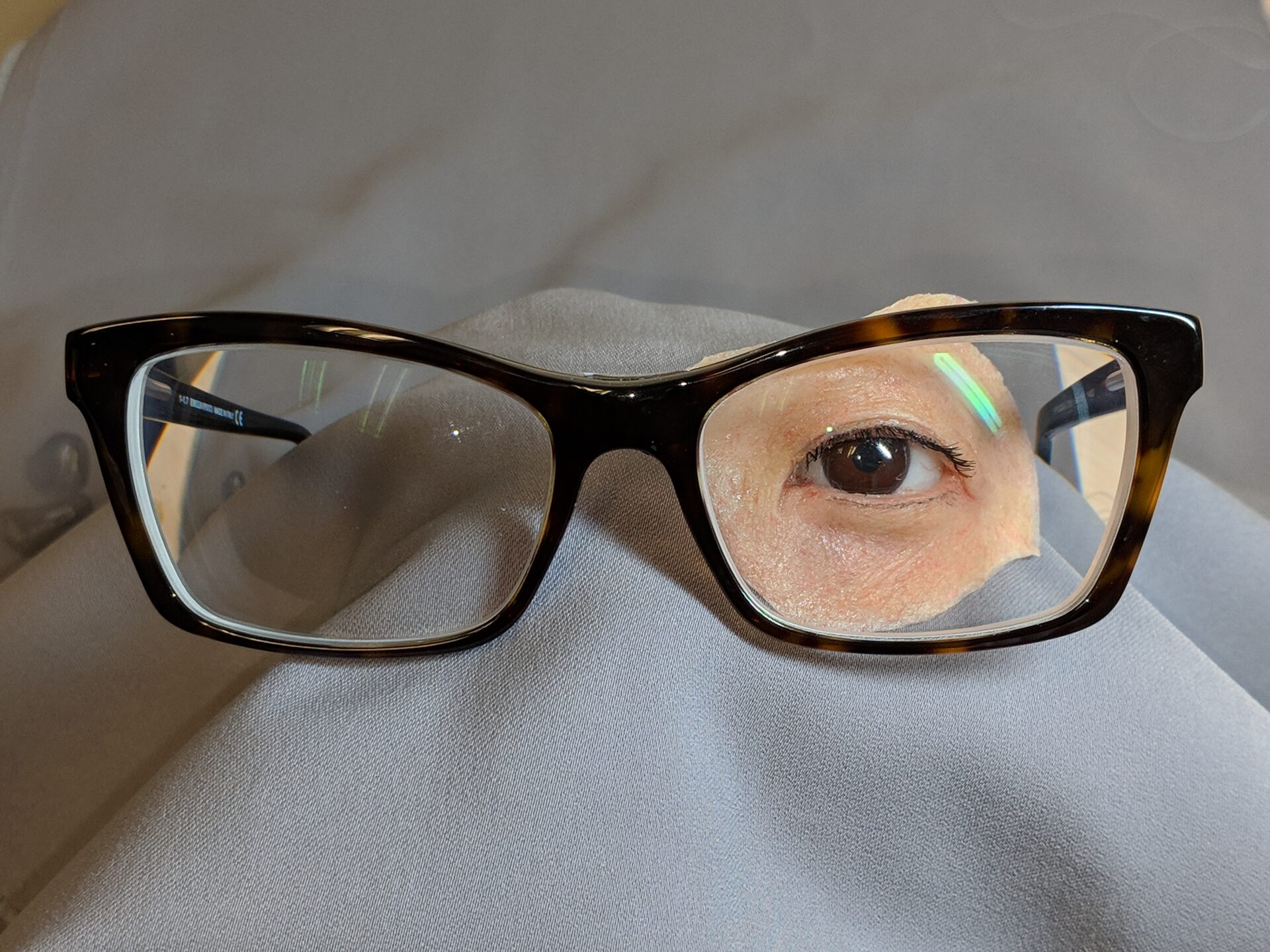
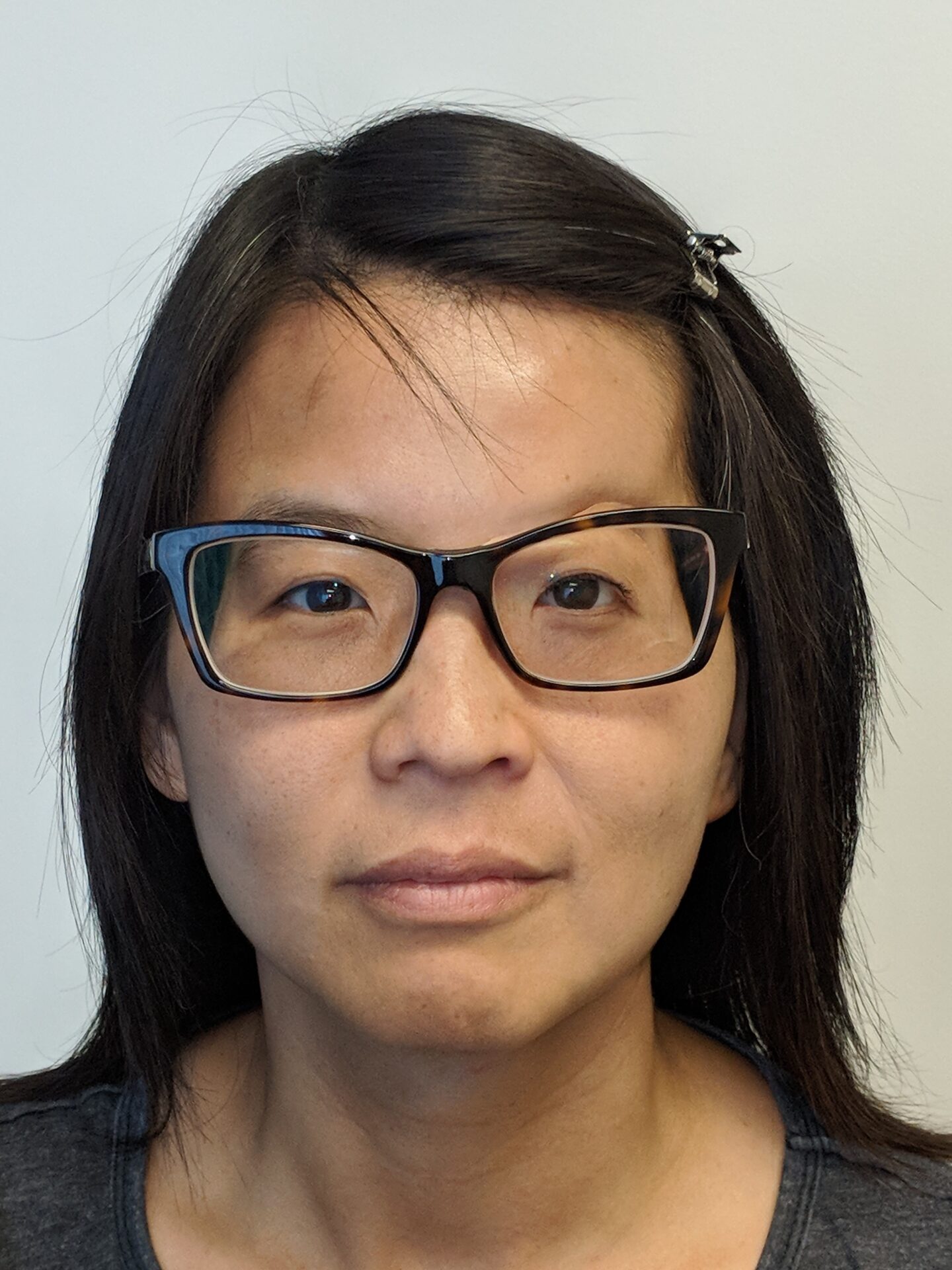
Glasses Retained Orbital Prosthesis
Glasses Retained Orbital Prosthesis
When patients have very delicate skin or adhesive sensitivities or prefer the simplest way to wear their prosthesis without surgery we simply attach the orbital prosthesis to attractive eyeglasses. Experience again helps us know the best materials to use, the styles of glasses that work the best, and the cleverest molding techniques to maximize aesthetics, camouflage and durability of the system. Its an old-school method, but when done well its perhaps the most elegant and liberating of all.

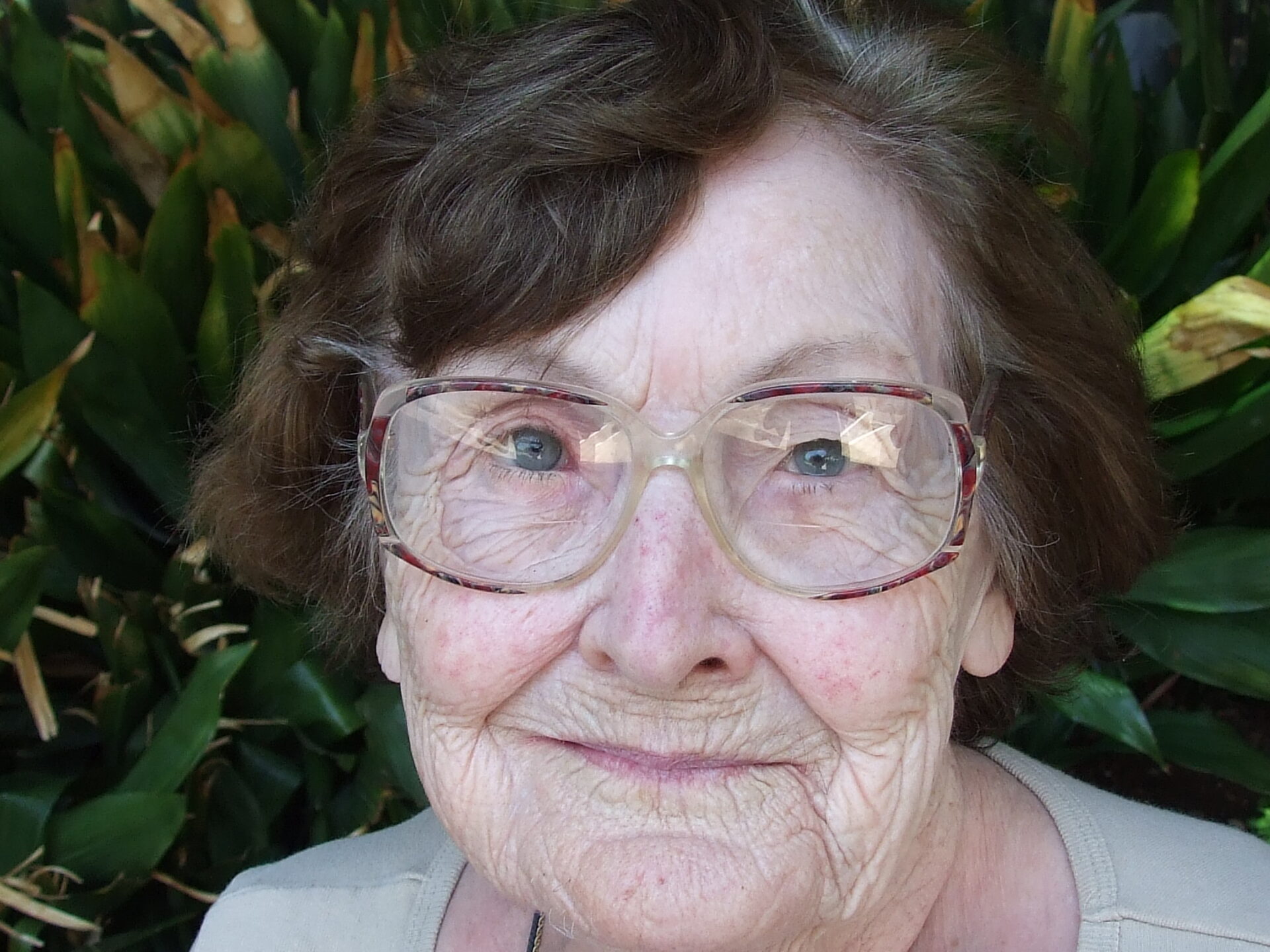
Hollow Bulb Anatomically-Retained Orbital Prosthesis
Hollow Bulb Anatomically-Retained Orbital Prosthesis
This patient has received a hollow extremely lightweight orbital prosthesis that slips in and stays secure requiring no adhesive, no bone-anchored implants and no other mechanical means of retention. This technique was published in a chapter written by Greg Gion, MMS, CCA on orbital prostheses in the textbook Facial and somatic Prosthetics (McKinstry, 1995). The technique was also included in a chapter on orbital prosthetics in Principles and Practice in Ophthalmic Plastic and Reconstructive Surgery (Bosniak, 1995).
Of critical importance is that the bulb portion of the prosthesis seat absolutely passively in a very accurately captured exenteration cavity. The bulb walls are generally less than 2 mm in thickness with a mid-low durometer silicone. The technique was painstakingly developed to allow the elderly patient to enjoy their prosthesis without adhesive or fear of tissue trauma.
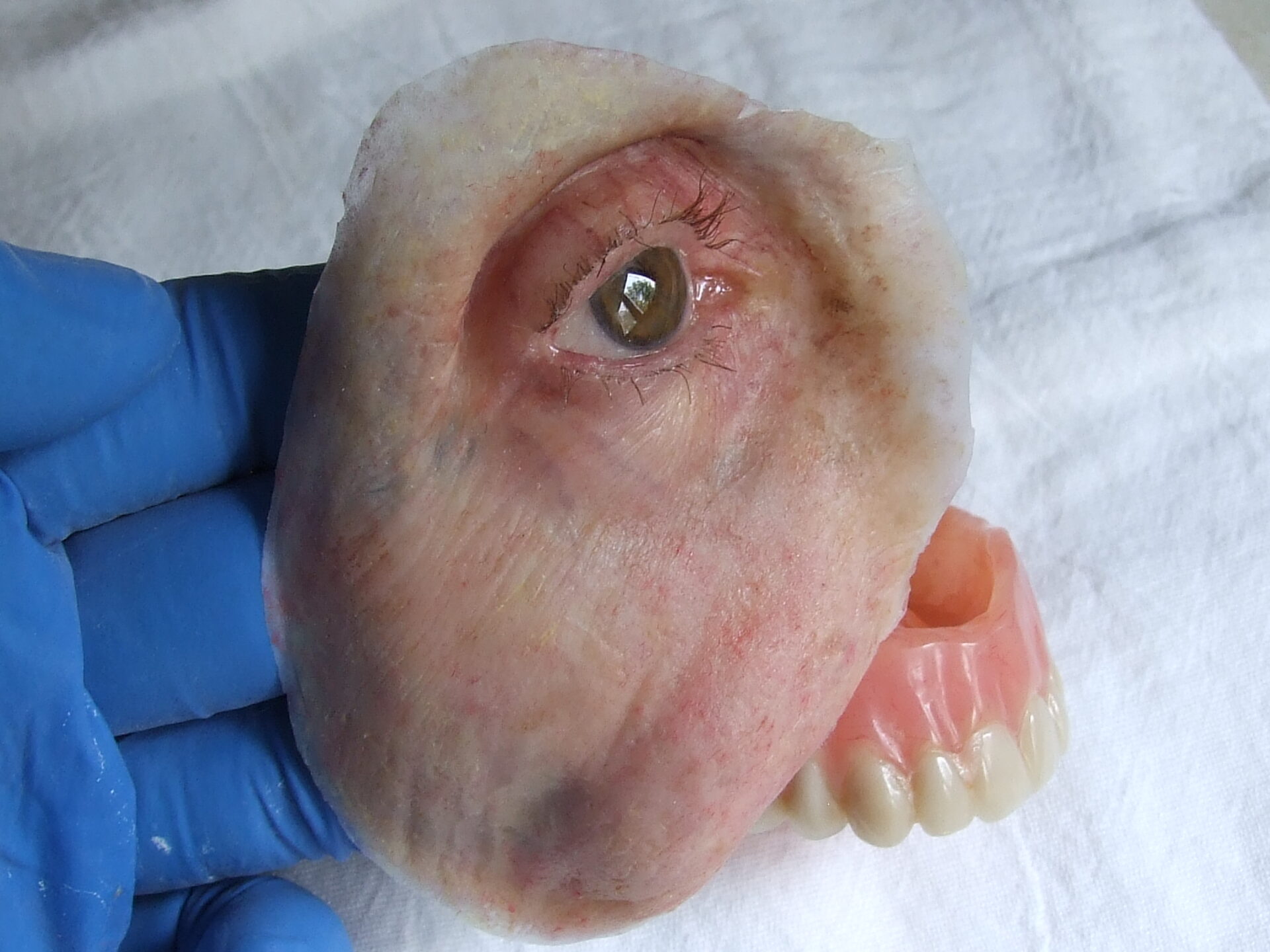
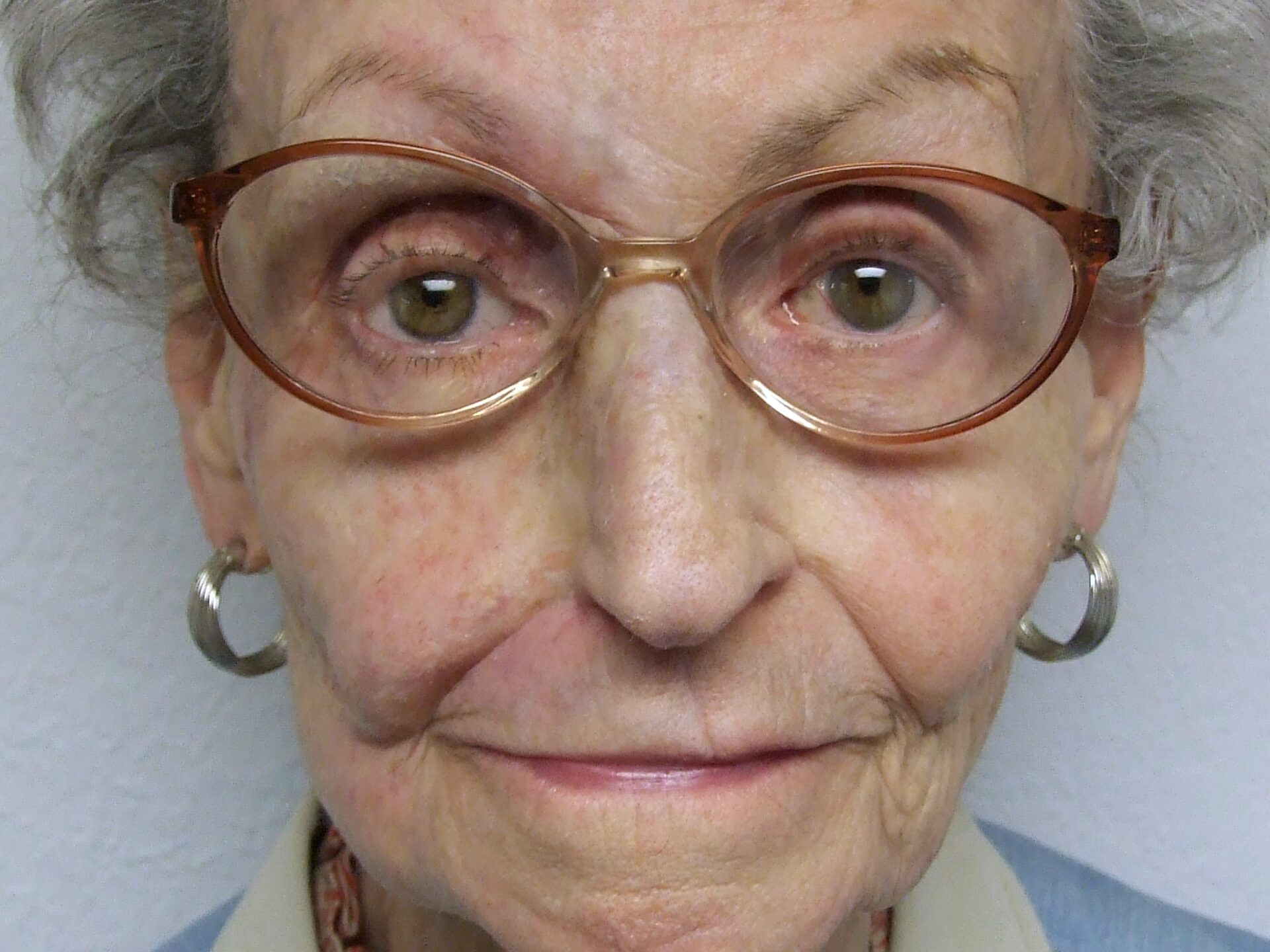
Extraoral Maxillofacial Prosthesis
Extraoral Maxillofacial Prosthesis
The larger orbital prosthesis is sometimes classified as an upper facial prosthesis or hemifacial prosthesis. Orbital exenteration with hemimaxillectomy is a very ablative surgery that necessities a larger facial prosthesis. However, the prosthesis is designed very light in weight with a magnetic connector so that it may attach to the intraoral dental device called the obturator. Our design allows easy placement of the orbital prosthesis. Both the intraoral and extraoral components snap together with specialty titanium encased corrosion-proof magnets we have identified for this purpose. The two prosthetic components thereby stabilize each other. Taking this intensive approach we turn the devastating effect of the surgical deficit into an advantage for the patient.
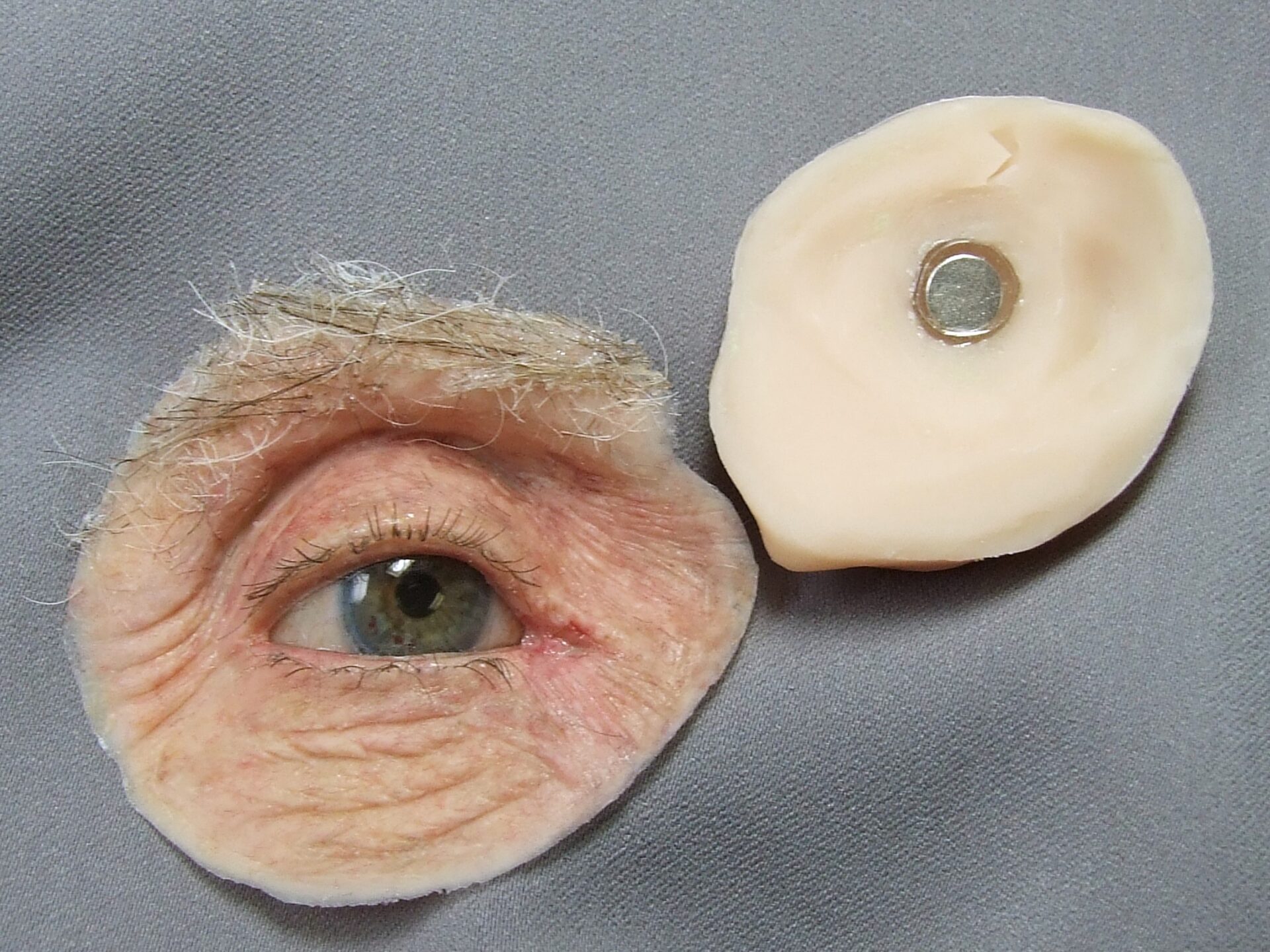
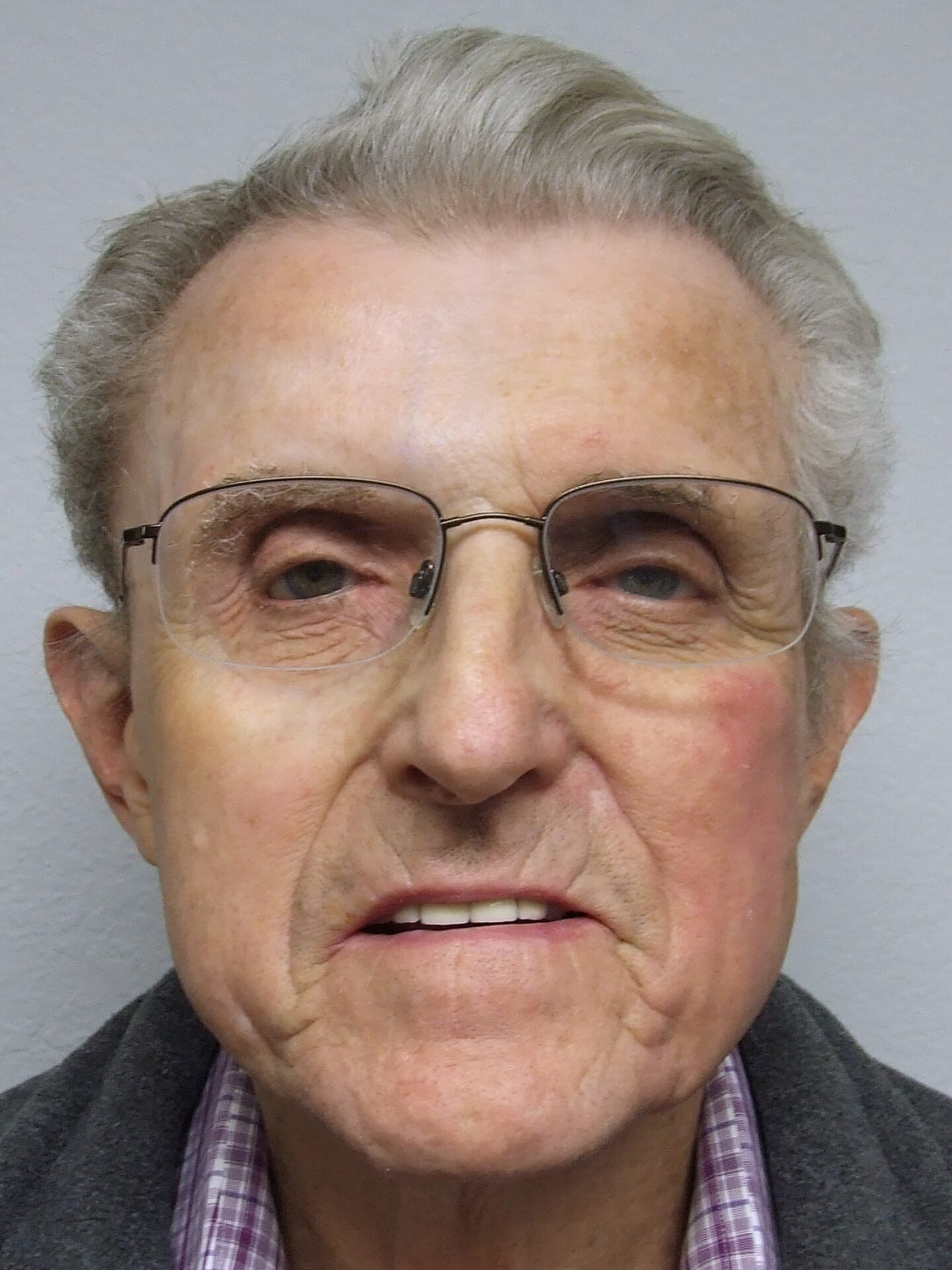
2-Piece Magnetic Orbital Prosthesis
2-Piece Magnetic Orbital Prosthesis
Our client received a 2-piece magnetic prosthesis which positions into the cavity in 2 steps. First, a soft silicone insert with a central neodymium magnet fits intimately into the skin-lined cavity creating a gentle but secure attachment. Secondly the aesthetic component clicks into place magnetically.
It stays in place with no adhesive and the orbital cavity now stays cleaner and is easier to maintain.
Our experience allows us to exploit opportunities that we know will make the patient’s life a lot easier with the prosthesis.
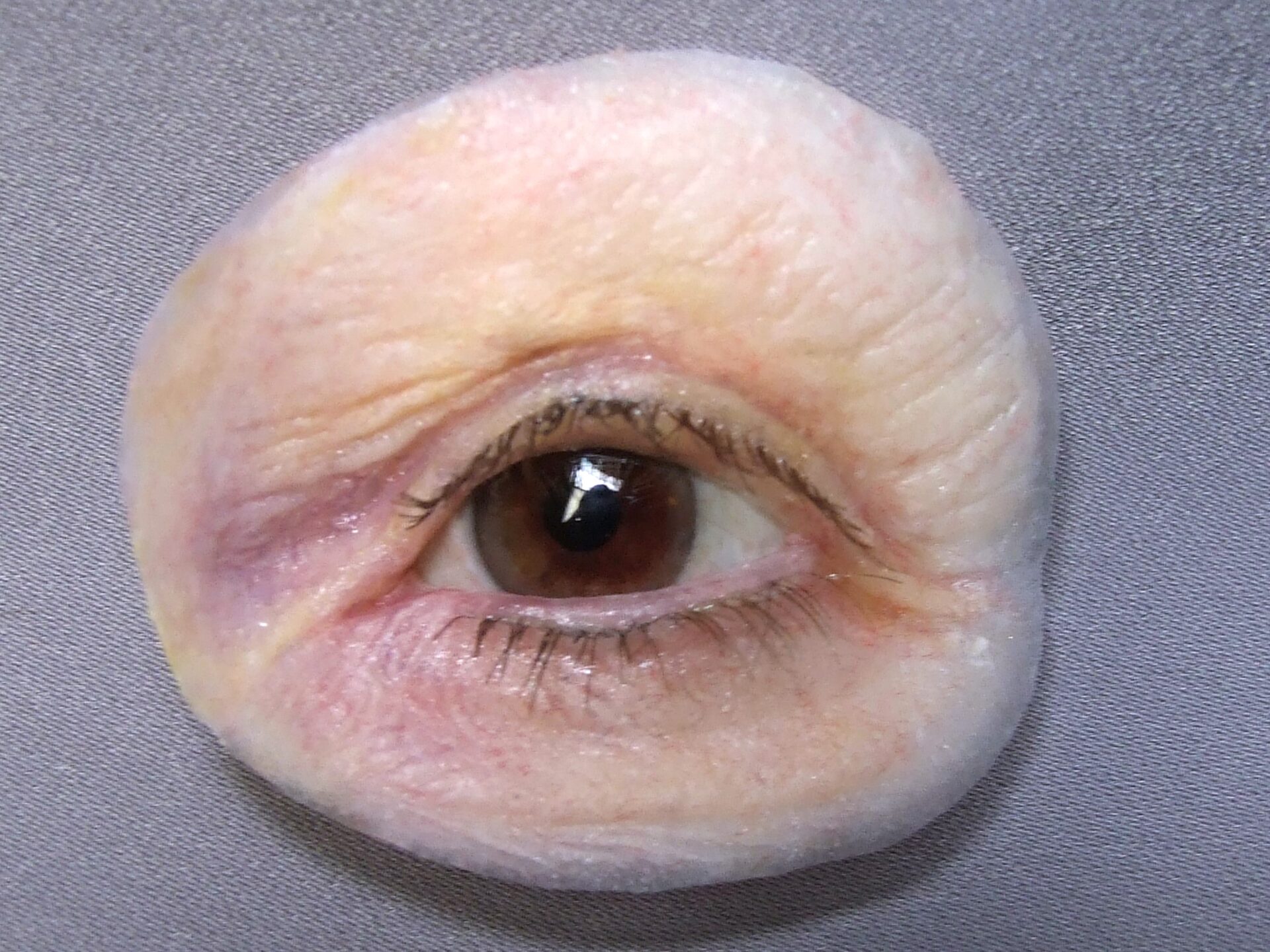
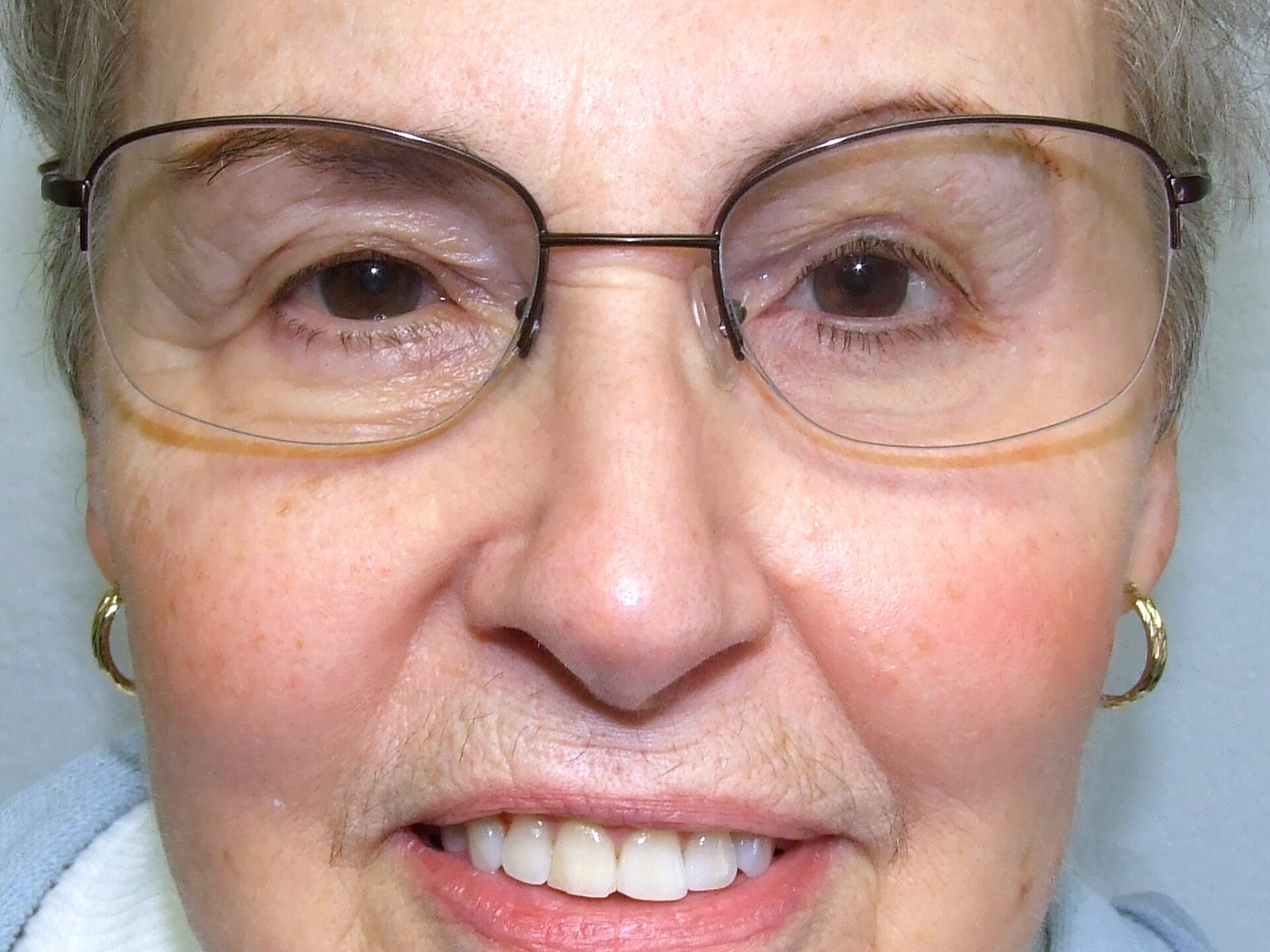
Osseointegration
Osseointegration
The patient elected to have 3 osseointegrated implant fixtures placed in her orbital cavity so she could have a magnetic orbital prosthesis. In most cases this process is just like dental implants. You go home the same day after the surgery and in a few months come back for the final prosthesis.
It is a wonderful option just letting the magnetic components hold the prosthesis securely in place with no adhesive at all.


